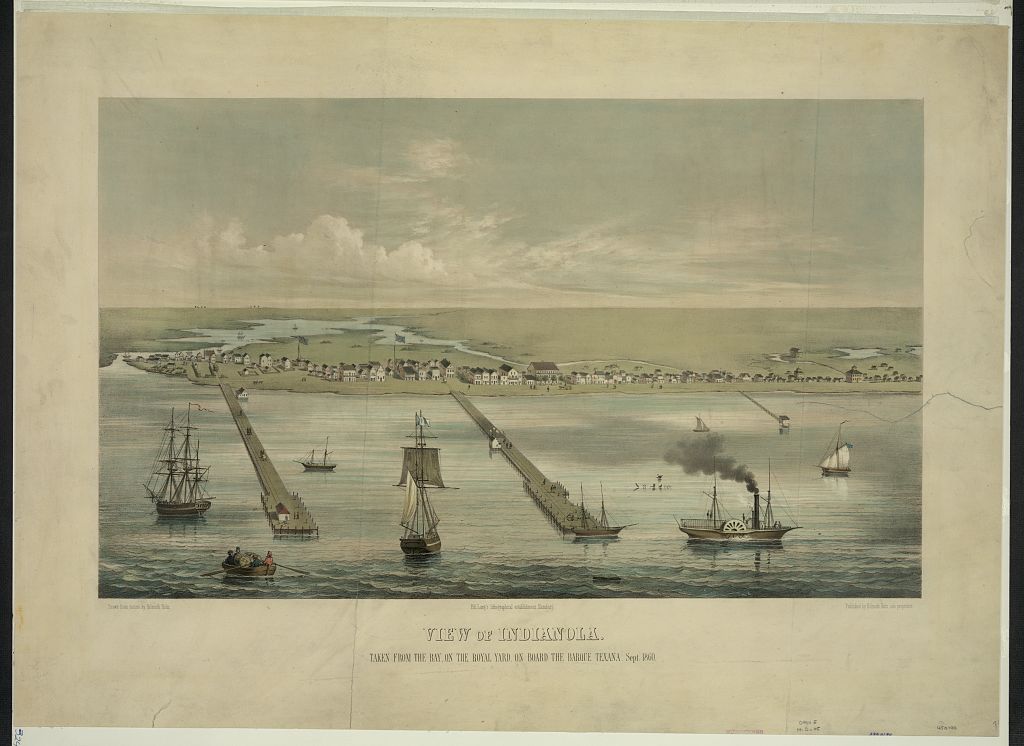Port of Indianola, Lost Civil Engineering Project
Author: Melinda Luna PE
February 2024
Galveston was the first port in Texas, constructed in 1825. In 1844, Indianola became Texas’ second port. However, a few actions increased the port’s vulnerability, which eventually led to its loss. Originally known as Carlshaven or Carl’s port, the port was named in 1849 after the Indian word for wave “ola”. The Harbor was initially name after Prince Carl of Solms-Braunfels, a German prince that led German immigrants to Texas. A Bird’s eye view of Indianola in 1860 by Helmuth Holtz shows two wooden piers extending outwards towards the Gulf of Mexico. A train that is connected to the port gives newcomers to TxDOT a means of getting where they’re going. There was also a route leading to the Chihuahua trail in West Texas. As there is no storm protection or aid at this area, the port of Indianola would have other difficulties in addition to this one.
As early as 1848, the town had multiple firsts, such as canning meat. It was the first US port to send chilled beef to the east coast. Later in 1853, the port became part of the town. The first difficulty arose in October 1862, during the Civil War, when the North captured the harbor. The town remained in the government’s hands until the start of 1864. Then there was a fire in 1867 and along with a yellow fever outbreak. Despite these challenges the population grew to 5000 in 1875. In September of 1875 a category 3 hurricane left all but 8 buildings standing. There were approximately 300 deaths (6% of the population) attributed to the storm. The town used what was left over to build again.
The sea port became inoperable in August and September of 1886 due to two more hurricanes. There were really three storms during the 1886 season, according to the trajectories examined. Although it never reached land, the first storm of June moved up the coast and raised the tides. On August 20, a category 4 storm made landfall. At Indianola, there was a 15-foot surge. It was reported in the press that the whole town was under water in just two hours. In Houston, the bay rose six feet. The majority of the Texas Coast was affected. The third category 1 storm to make landfall in Indianola occurred on September 23. The United States as a whole experienced seven storms that year, making it one of the busiest hurricane seasons. The downpour and storm surge were reduced, but the surviving people evacuated the town.The cyclone swept sand into the harbor, making it too shallow for large ships. This hurricane brought an end to Indianola and cemented Galveston’s status as Texas’ undisputed port.
Today, Texas boasts 18 ports, including Galveston. Texas ports generate over 370 billion in economic activity and provide 1.5 million employment to Texans.The port of Houston is the largest in Texas and the fourth largest in the United States. The Port of Galveston is among the top ten in the United States. Ports play an important part in the Texas economy, providing work for engineers as well as for Texas residents.

. Indianola Texas, 1860. Published by Helmuth Holtz, sole proprietor. [Photograph] Retrieved from the Library of Congress, https://www.loc.gov/item/93515580/.


